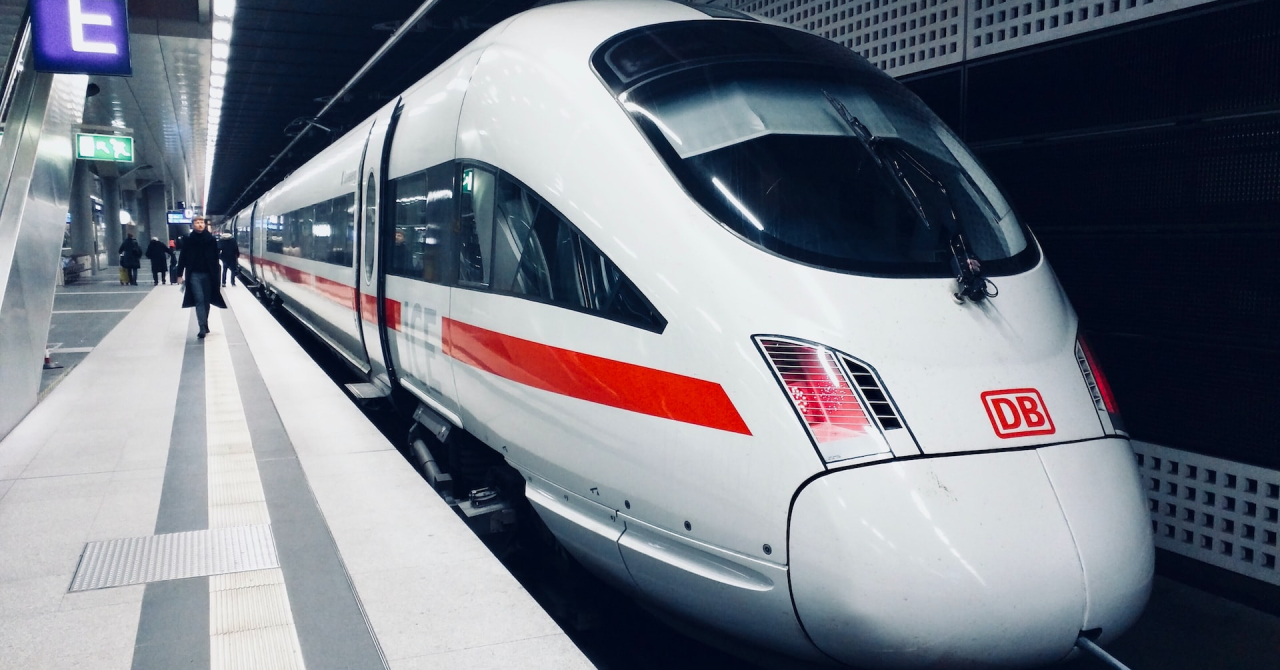What is a battery-powered train
Battery-powered trains, as the name suggests, are electric locomotives that are being powered by batteries.
They can also be manufactured in the form of battery-electric multiple units, which differ from locomotives in the way that the whole train is a one-piece from one end to the other, instead of multiple cars being pushed or pulled by an attached locomotive.
Battery-powered locomotives work just like with normal trains that are connected to the power lines, meaning that electricity (this time stored in the batteries) powers the electric motors, which keep the train going.
The main advantage of using such railway transport solutions is the fact that they don't release direct emissions in the atmosphere, compared to diesel or coal-powered trains.
Another eco-friendly alternative to batteries
Another potential solution that companies can work with is hydrogen-powered locomotives, which are still powering an electric motor, but use hydrogen, instead of batteries.
Using both solutions could be great for the environment, as there isn't enough lithium in the world to manufacture the necessary batteries required for battery-electric trains, especially since they are needed for other applications, such as electric cars and electronic devices.

The source of electricity is very important in the case of battery-electric trains, just like with hydrogen, since these vehicles aim to be nature-friendly.
If electricity and hydrogen are obtained from clean sources, such as solar panels or wind turbines, then the sustainability and low-carbon factor of these locomotives increases dramatically.
Even though they don't directly release emissions, it is not recommended that we use electricity obtained from gas or coal, as it would mean that these railway transportation solutions aren't used to their full potential.
The challenges of battery-electric trains
As you probably guessed, range is the biggest Achilles' heel for battery-powered trains, as they require great amounts of electricity to start going from a standstill, which is why they are mostly suited for regional cargo or people transport.
For example, Hitachi's battery-powered train can reach speeds of around 140-160 km/h and it can travel for around 90 kilometers.
Fright operators claim that such battery-powered trains need charging stops every 240 kilometers or so and higher ranges can be achieved on all models if regenerative braking is to be used.
Also, it is important to mention that battery-electric trains can also be charged on the go if they are travelling through a portion of railway that is electrified by wires, which means that the train can use the power grid to charge its batteries and to power the motors.

The two-car trains, provided by Siemens Mobility, will be able to accommodate 120 passengers and will travel for as much as 80 kilometers on battery power and they can be charged either through regenerative braking or via the power lines.
Diesel-hybrid trains can be a good compromise
Since we are not yet at the point of travelling electric-only, especially for long journeys, diesel-electric locomotives can still bring some environmental benefits, even if not the ideal ones we are looking for.
In fact, such trains have been used since the 1990s and companies claim that these models can reduce the emissions coming from diesel-only locomotives by around 19%.
This is done by getting the train to move using the battery and then switch to the diesel engine for high-speed cruising.
Alternative solutions for hybrid powertrains imply using a large battery that is permanently charged by a set of small generators.
While this solution still releases some emissions, it is still fairly efficient, because the generators are running at a constant speed in order to charge the battery, which is the train's only power source for the electric motors.
Some experts believe that, by replacing just 10% of the trucks that are transporting cargo with diesel freight trains, it would be the equivalent of removing some 2 million cars from the road.
If we apply the same rule to hybrid locomotives or fully electric ones, the benefits could be even larger.
Applying the tech in large cities
Although we are talking about trains here, the same technology can be applied to trams in cities, especially since these are significantly smaller and lighter when compared to trains.
They also travel at much lower speeds, which means that battery-powered trams can also be a great solution to make urban transport even more efficient and eco-friendly.
This can be done in order to use less power from the grid in areas transited by trams or to remove power lines entirely from areas that would otherwise benefit from it.
Despite being the future of rail transport, battery-electric trains will require important investments in terms of infrastructure, plus charging speeds will also have to be improved.
This is not as much of a problem as it is for EVs, for example, because, especially for passenger trains, they tend to spend a good few minutes in stations, waiting for everyone to get on board, meaning that they will be juicing up the batteries frequently.
The availability of lithium-ion batteries is also a point of concern, which can be solved by diversifying the fleet with hydrogen-powered trains.
Nonetheless, battery-powered trains can become the future of rail transport and they can enable authorities to build new railways even in areas where they couldn't bring power lines, since these trains will be able to travel for as much as hundreds of kilometers on their own.
 Mihai - Cristian Ioniță
Mihai - Cristian Ioniță













Any thoughts?